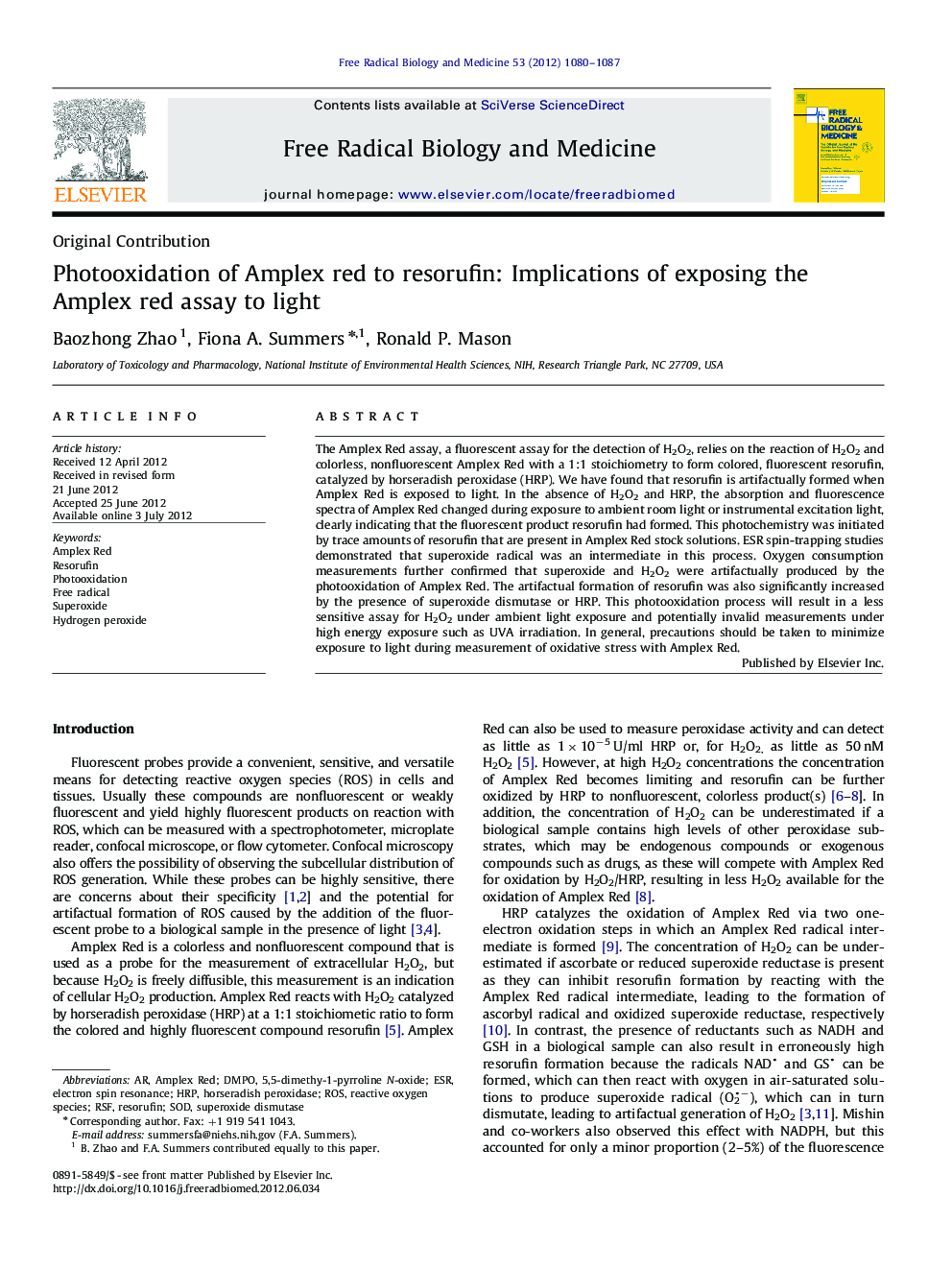| Article ID | Journal | Published Year | Pages | File Type |
|---|---|---|---|---|
| 1908586 | Free Radical Biology and Medicine | 2012 | 8 Pages |
The Amplex Red assay, a fluorescent assay for the detection of H2O2, relies on the reaction of H2O2 and colorless, nonfluorescent Amplex Red with a 1:1 stoichiometry to form colored, fluorescent resorufin, catalyzed by horseradish peroxidase (HRP). We have found that resorufin is artifactually formed when Amplex Red is exposed to light. In the absence of H2O2 and HRP, the absorption and fluorescence spectra of Amplex Red changed during exposure to ambient room light or instrumental excitation light, clearly indicating that the fluorescent product resorufin had formed. This photochemistry was initiated by trace amounts of resorufin that are present in Amplex Red stock solutions. ESR spin-trapping studies demonstrated that superoxide radical was an intermediate in this process. Oxygen consumption measurements further confirmed that superoxide and H2O2 were artifactually produced by the photooxidation of Amplex Red. The artifactual formation of resorufin was also significantly increased by the presence of superoxide dismutase or HRP. This photooxidation process will result in a less sensitive assay for H2O2 under ambient light exposure and potentially invalid measurements under high energy exposure such as UVA irradiation. In general, precautions should be taken to minimize exposure to light during measurement of oxidative stress with Amplex Red.
Graphical abstractFigure optionsDownload full-size imageDownload high-quality image (126 K)Download as PowerPoint slideHighlights► Resorufin is artifactually formed when Amplex Red is exposed to light. ► Superoxide and H2O2 are also artifactually formed during this photochemistry. ► The rate is increased by the presence of superoxide dismutase or HRP. ► Minimizing laboratory and instrumental light exposure is necessary to avoid errors.
